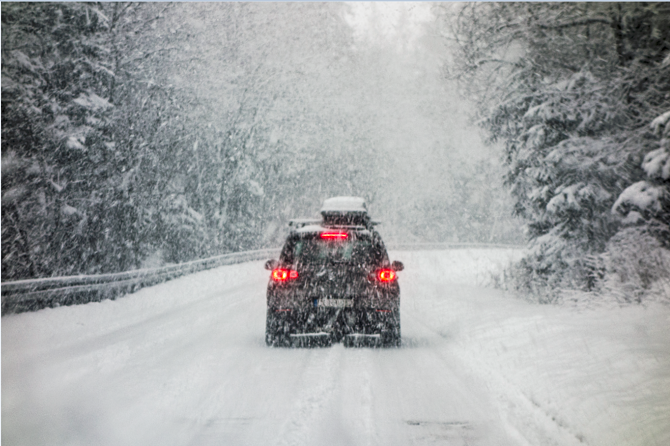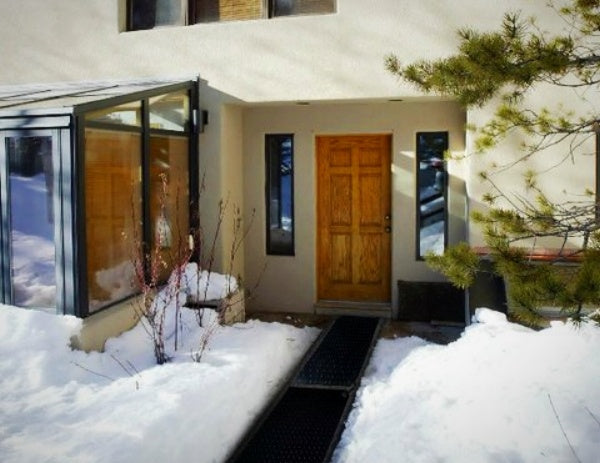
If you live in an area that experiences cold temperatures, sleet, and snow during the winter, there are certain steps you should take to prepare your car and yourself for inclement weather. You should also be prepared if you're traveling from a warmer region to a cooler region for road trips or during the holiday season. So, locate your owner's manual, put on some work clothes, and use these tips from the pros for getting your car winter-ready.
Change the Oil
Your car's engine needs regular oil changes to prevent excessive wear and seizing of engine parts. The frequency of oil changes varies from make and model. Additionally, note the viscosity of your oil in winter time, as excessive thickness can make it harder to start the engine. Most experts suggest a 5W oil for winter use, though you should consult your owner’s manual for the ideal recommendation for your car model.
Check the Battery
Trying to find someone to help jump your car when the battery depletes isn't a good situation. Check the posts and connections on your car battery to ensure they're free of corrosion. If your battery is more than three-years old, have it checked for charge-holding capacity. Proper battery storage with a charger can avoid some of the problems faced in winter, and an effective battery charger costs less than buying a new battery every year, so invest in something that will keep your battery sharp throughout the winter.
Prepare Your Tires
Cold weather can reduce air pressure in tires. Check air pressure every two weeks to make sure the tires stay at the recommended levels. If you live in a hilly region with a fair amount of snowfall each winter, consider switching to snow tires for the season.
Service the Radiator
The radiator is an important component that helps keep your car from overheating. Dirt and debris get lodged in the narrowly-spaced fins, which reduces the radiator's efficiency. Take your car to an auto service professional to have the radiator flushed, cleaned, and refilled.
Check the Heater and Defroster
The heater can keep you comfortable in cold weather, while the defroster provides safety by keeping the windshield clear of foggy condensation. If the windows inside your car become too foggy, open the airflow intake on the heater to allow outside air to mix with heated cabin air.
Brake Inspection
Check the brake fluid level and top off if needed. If your brakes feel "soft" or slow to engage, take your car in for a professional brake inspection. Scraping and squealing noises from the rotors and drums require the attention of your auto pro.
Change Spark Plugs
Old and dirty spark plugs or distributor caps can prevent your car from starting in any weather. If your vehicle's ignition turns over just fine but is slow to start, take it in for an inspection. Even if the spark plugs aren't the problem, your car has an issue that needs to be addressed.
Check the Windshield Wipers
New windshield wipers are a small investment for safe driving. Additionally, change the windshield-cleaning fluid to a winter blend which prevents freezing. If your wipers are streaking, you might want to change the blade to avoid diminished visibility during poor weather.
Fuel Treatment
Add a bottle of fuel deicer to your gas tank as the temperatures drop. Repeat the process each month through the winter. Try to keep the gas tank filled above the three-quarter mark. A full gas tank prevents ice from forming in the tank and fuel line.
Emergency Preparedness
You never know when your car will break down or a snow storm stops your car in its tracks. Prepare a winter driving safety kit of the following items to keep inside each car you drive.
-
First-aid kit
-
Blankets, boots, clothes, and gloves
-
Bottled water and food
-
Small shovel, ice scraper, glow sticks, and flashlight with extra batteries
-
Jumper cables and toolkit
-
Flares and small reflective traffic cones
-
Spare tire, tire-pressure gauge, and tire-changing equipment
These tips to winterizing your car are really important for safe winter driving. A visit to your auto mechanic can take care of most of these tips, but it's good to know what should be done for continued do-it-yourself checks through the colder months.


